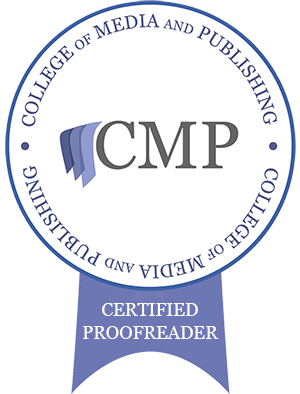
How To Start A Story
Today we’re going to look at Fallout’s inciting incidents, and how to motivate players and characters to follow the plot. The most important part of the beginning is the ‘inciting incident’. An event that sets your protagonist on the road to the main plotline. These can be major or minor events, but they have to trigger a change for your protagonist.
You can begin your story before, during or after this incident, but it’s important to at least tell the reader that it happened. In video games, this is usually handled via an introductory cutscene. In the early days of videogames, the backstory was often included in the game manual. Of course this is less common now, so the game has to give you the backstory.
So we’ll start at the beginning and work through the games in chronological order. Of course, we have to note that the series itself has a rather major inciting incident. The bombs. The nuclear war happened on the 23rd of October, 2077, wiping out 90% of life on the surface. A large number of people survived in underground Vaults. So bear this in mind, as it matters to every Fallout story we will be examining.
Fallout – The Water Chip
The first Fallout game came out in 1997. You begin with creating your character, known as “the Vault Dweller”, from Vault 13 located in southern California to the west of Shady Sands, a small town that would go on to be the capital of the New California Republic (NCR). The Vault is designed to support up to a thousand people, and will remain sealed for 200 years, to study the effects of prolonged isolation. It was supplied with an extra G.E.C.K. (Garden of Eden Creation Kit) instead of extra water chips, which were sent to Vault 8.
In 2161, the Vault’s water purification chip started to malfunction leading the Overseer of the Vault to send people out into the wasteland to find a replacement, to no avail. The overseer chooses your character for this job. On the 5th of December 2161, the Vault Dweller leaves their Vault for the wasteland.
At that point, the Vault has only 150 days of water reserves, which does put a time limit on success for the Vault Dweller. The game does implement this time limit as well, although you can extend the time limit through your actions in the Wasteland.
Motivation?
So what is the motivation? Vaults are generally safe and secure, if there’s no horrific experiment going on. The limited living space means that everyone needs to contribute to the community to ensure their survival. Your character has lived their whole life in this Vault, and may well have friends and family, but they want to help their Vault. Water is essential for life, after all, and in a radioactive wasteland, water purification is vital. So it makes sense to keep looking for a replacement water chip, to save their community, doesn’t it?
Fallout 2 – Finding the Garden of Eden
Fallout 2 takes place 80 years after the first game, in a village called Arroyo, in Oregon. Arroyo is suffering from a famine and a drought. The village was founded by the Vault Dweller, after they were exiled from Vault 13 due to spending too much time outside. A serious drought in 2241 leads the village elder to ask your character, the Chosen One to find a G.E.C.K. The Chosen One is a direct descendant of the Vault Dweller.
The G.E.C.K. is a terraforming device that is capable of sustaining life in the wasteland, including seed, soil supplements, a cold fusion power-generator, matter-energy replicators, atmospheric chemical stabilisers and water purifiers. Each vault has two as standard (in the West Coast, at least) and the Elder believes that only a G.E.C.K. can save the village of Arroyo from starvation.
Motivation?
Again, your character’s motivation is very similar to Fallout’s protagonist. Your people are suffering from a shortage of an essential resource and are relying on you finding the one thing that could save them. It’s all about the preservation of life, and saving your community. Pretty motivating reasons to embark on this quest.
Fallout 3 – Following in Daddy’s Footsteps
Like Fallout, you start off as a vault dweller, but we’re on the East Coast of the USA, near Washington DC. You live in Vault 101, and you have a kind of prologue in this one, building your character through experiencing various events of your childhood. The game does actually start with your birth, and your mother dies shortly after. The protagonist is referred to as the Lone Wanderer.
So, it’s just you and your dad, living in the Vault. Your father is the Vault’s doctor. One day, when you’re about 19 or so, your friend Amata wakes you up to tell you that the Vault’s security are looking for you because your father has left the vault. Vault 101 was to remain sealed forever. The experiment was to study the role of the overseer in a completely isolated community.
Despite this, the Vault has opened a few times. The Vault did not have a G.E.C.K. but it was designed to be self-sustaining indefinitely. You have no idea why your dad left the vault, but after learning security are after you, you end up escaping the vault to go and find him.
Like previous Fallouts, you are leaving the safety of your home in search of something important. In this case, your only living family. He leaves a note with his friend Jonas, who you find dead during your escape. The note tells you not to follow him, and he hopes the Overseer will blame him entirely. That isn’t what happens though.
Motivation?
So what is your motivation here? You’ve left your home, given no real choice in that, so it’s only logical you would pursue the only person you know, your father. What else would you do? Fallout 3 is the series first open-world game, so you can absolutely find plenty to do other than follow the main story, but it’s only by searching for your dad that you’ll get into the nitty gritty of the main story, and learn about Project Purity and the major players.
Fallout New Vegas: They Went That-a-way!
Back to the west, this time we’re in Nevada, the Mojave wasteland. A desert with a brightly lit and bustling city now known as New Vegas. New Vegas is still Vegas, with casinos, exotic dancers and a bunch of reformed tribals running the place, with Mr House overseeing it all. The year is 2281, four years after the events of Fallout 3.
You are the Courier, employed by the Mojave Express to deliver a Platinum Chip to the Strip. On route, a man in a snappy suit kidnaps you, aided by some Great Khans. Benny steals the chip, shoots you in the head and buries you in a shallow grave.
Certainly, an interesting way to start a video game by killing the main character in the opening cutscene! Okay, not quite, a cheerful cowboy robot finds you and takes you to the local doctor for treatment. You are under contract to retrieve your lost package and deliver it to the client. That means you need to find this man, so you begin to follow his trail, asking people you meet along the way if they’ve seen him.
In the background of all of this, seemingly unrelated to your situation, there’s obviously going to be a battle coming between the NCR and Caesar’s Legion. There’s talk of political issues in NCR’s home territory, but everyone wants control of Hoover Dam and the electricity it can provide. But first, you need to find Benny.
Motivation?
So, what’s your motivation here? Well, there’s two things. The first is your contract for the job. It’s pretty clear that if the package is stolen from you, you must get it back and ensure it gets delivered, and your employer will take no responsibility for any injuries, loss of life or costs of this. If you don’t complete the delivery, you won’t get paid, but you may also be hunted by mercenaries to recover the debt. You need money to live, after all.
The other motivation is personal revenge. Being robbed and shot in the head is pretty unpleasant, one assumes, and it’s perfectly reasonable to be angry about it. So, perhaps you want revenge on Benny for doing this to you. Or maybe you want to understand why he did it. If you’re playing as a female character, perhaps you found this whole experience a turn-on? Not judging, I promise, but sleeping with Benny is absolutely an option when you do track him down, for a female character.
Fallout 4: Out of Time
Fallout 4 is next and we’re back on the East Coast, namely the Commonwealth of Massachusetts, or just the Commonwealth. Boston is an important city in the history of the US, as well as being home of several major universities. Nearby Salem is famous too. Interestingly, this game has a prologue set on the day the bombs fell. The protagonist has a set backstory, an army veteran for the male, or a lawyer for the female.
You begin the game in a cosy family home, taking care of your infant son, Shaun, when the bombs come and force you to the Vault, Vault 111. Where you’re all cryogenically frozen. At some point, you are defrosted to witness someone in a hazmat suit and a grizzled merc take your baby and shoot your spouse. You’re then refrozen, for an unknown period of time, but likely 60 or so years, then defrosted again.
Motivation?
Everyone else in the Vault is dead, leaving you, the Sole Survivor, to get out of the Vault and go off in search of your missing child. That’s your motivation, revenge for your dead spouse, and to find your kidnapped child. Which makes sense, and the game tries really, really hard to evoke some emotions about this whole situation.
For me, it kind of falls flat, we know so little about our spouse, and it’s hard to feel a strong connection to a baby that can’t even talk, when you’ve spent basically no time living in this version of the world. The voice acting is a bit overdone, especially the male protagonist, and by the time you get to the point of finding the mercenary, even they have all but stopped talking about Shaun. The opening of Fallout 4 is probably the least effective at highlighting the inciting incident and making the player want to follow the story, but don’t let that put you off, it does get much better once you get into the meat of the story, I promise.
Who Did It Best?
So, who did it best? I think for me, Fallout 3 and New Vegas pulled it off the best. Fallout 3, you’re kind of forced to leave the Vault. I remember in my first playthrough, I really wanted to know why my dad left the Vault. So I followed along to get some answers.
My first time playing Fallout New Vegas, the opening was quite a shock. It was definitely a bold choice, having your main character be shot at point blank range like that. So again, I wanted answers. Why did Benny feel the need to kill me, when he’d already stolen what he wanted from me? What was so special about the Platinum Chip?
I haven’t played 1 and 2 as much, the games are so old now, it takes a bit of work to get them to run on newer machines, and I haven’t managed to set them up on my new PC yet. But I do feel the inciting incidents set up the games pretty well, to get you into the story.
What I didn’t like
For me, Fallout 4 is the weakest in this regard. My first playthrough, I felt the urgency when the report of the bombs falling came through and the rush to the Vault. I wasn’t surprised by the cryopods in the Vault, but it sets up the twist with Shaun. You don’t know how much time has passed. After learning that, I found it quite difficult to really care that much about him. So it doesn’t work as well to motivate me to find this baby. There’s settlements to help, farms to build, raiders to kill, settlements to help and of course settlements to help. Yeah, I know, it’s an old meme, but Preston Garvey is really pushy about his radiant quests, that never end. You get sidetracked and distracted.
What are your thoughts? Let me know in the comments! I’d love to hear other people’s perspectives on it. I am going to hold off talking about the TV series on Prime for now, just to avoid spoilers since it’s so new. But I loved it, and I’m rewatching it as I write this. So once it’s been out a while, I’ll definitely talk about it.
Thanks For Reading!
Thanks for reading, congratulations for making it to the end of this long post about Fallout’s inciting incidents. I hope it was interesting. I am going through Fallout New Vegas on my Youtube channel and analysing the story in depth, so if you’d like to join me on there to hear me talk about the games, you can find it here.



